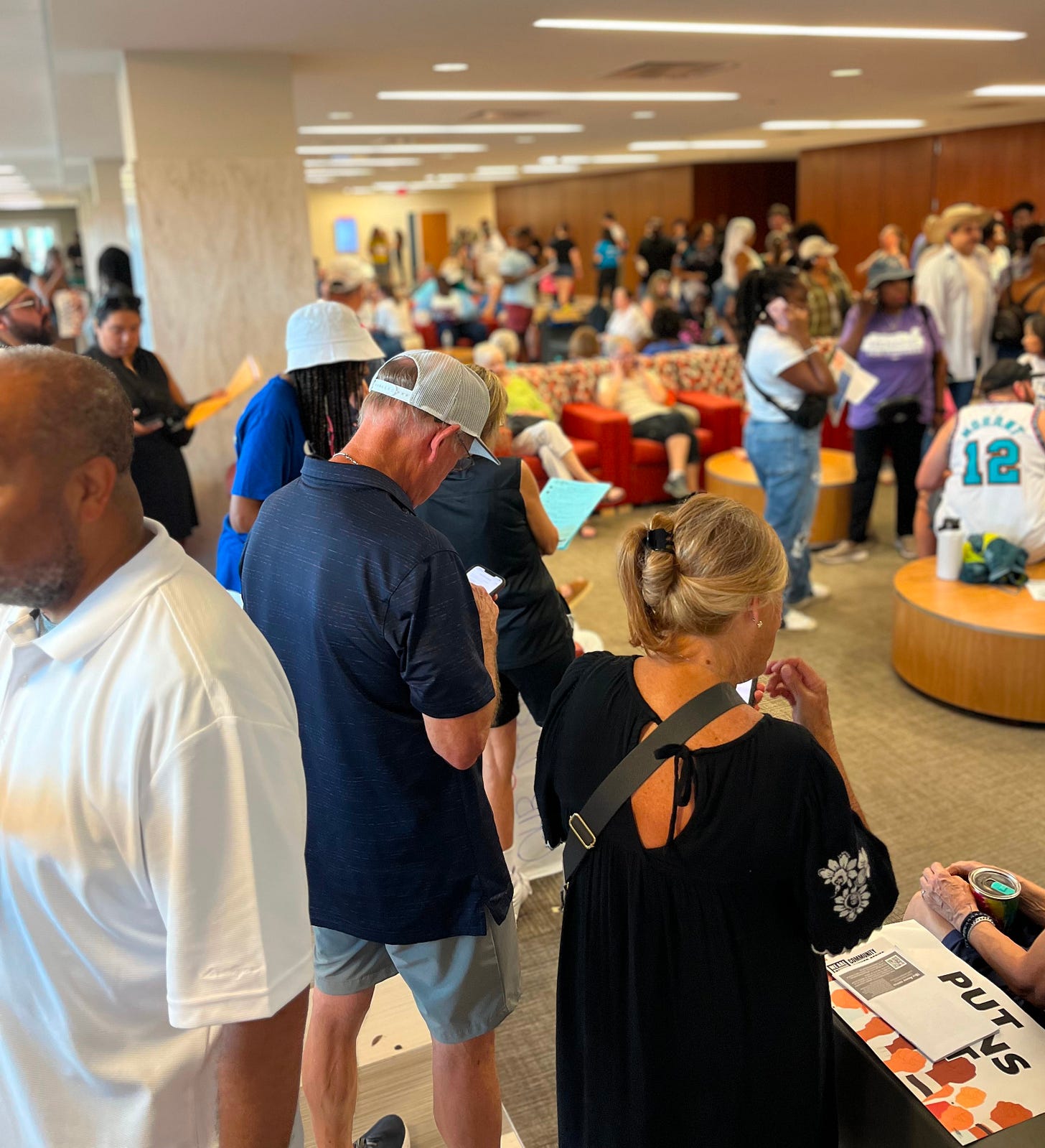Witnesses wait to testify and observe the House redistricting committee hearing at the University of Houston on July 26.
Public testimony started last week on the topic of congressional redistricting in the House and Senate special committees. Testimony has been overwhelmingly in opposition to state redistricting, expressing concern that the call itself is politically motivated and that legislators should instead be addressing flood relief, emergency alert systems, and other pressing issues impacting Texans.
By law, redistricting is conducted every ten years based on the most recent census data. The most recent congressional maps, approved in 2021 are being contested in court. While it’s not unheard of to conduct mid-decade redistricting, it is very rare, which has led many to ask why Governor Abbott added this issue to an already-packed call list.
The item was added to the call only after the U.S. Department of Justice sent a letter to Governor Abbott and Attorney General Paxton charging that districts TX-09, TX-18, TX-29, TX-33 “run afoul of the Voting Rights Act and the Fourteenth Amendment,” and urging Texas to “rectify these race-based considerations from these specific districts.” Many who have testified so far–from congressional representatives to law professors–expressed confusion at that charge since just weeks ago in the trial over Texas’ current maps, attorneys representing the State of Texas argued repeatedly that a race-blind process was used to draw the boundaries of the existing districts.
The Texas House held in-person hearings in Austin and Houston, and will be holding their final hearing in Arlington on Monday, July 28, from 5:00pm-10:00pm. The Senate is holding four virtual hearings, with the final two scheduled for July 28th and 29th. Public participation has been robust, with overflow-crowds. In Houston, admission into the packed hearing room was closed while hundreds of testifiers waited in foyers and hallways for their names to be called and space to be made available for them to enter.
Redistricting has far-reaching effects on our communities. Gerrymandering districts for political gain interrupt and can derail efforts within a district that seek to solve complex issues. On the other hand, cohesive, stable districts can invest the time and resources needed to work together for long-term solutions that will benefit their own district and even address larger, regional issues.
The process of drawing congressional districts also impacts individuals seeking constituent services such as assistance with FEMA, immigration, or the IRS. Often, constituent issues involve interaction with state or federal agencies over an extended period, in some cases years. While people may turn to another member of the Texas congressional delegation if they lose contact with their own representative due to redistricting, members of the delegation testified that by law, they are prohibited from using their officeholder resources to serve individuals outside their own district.
Many who testified expressed concern that no map has been proposed, nor have legislators explained the process by which maps will be drawn. Without a specific proposed map to weigh in on, all the testimony heard was officially counted as testimony “on” the issue rather than having the option of being “in support” or “in opposition,” as is the case in most public hearings.
Districts can be drawn in such a way that one representative may have constituents with widely varied and even competing interests. For example, one gerrymandered district may contain farming communities, urban areas, and small towns—each with unique and pressing needs. When that happens, some voices may be drowned out, leaving entire populations feeling overlooked and underrepresented.
What now?
At each House hearing, Chair Cody Vasut has stressed that this round of hearings is intended to give Texans an opportunity to testify on the general question of redistricting, and that a second opportunity will be provided to testify on a specific map should the redistricting process proceed and a map be proposed. Given the compressed 30-day special session timeframe, however, many observers remain skeptical of the process.



